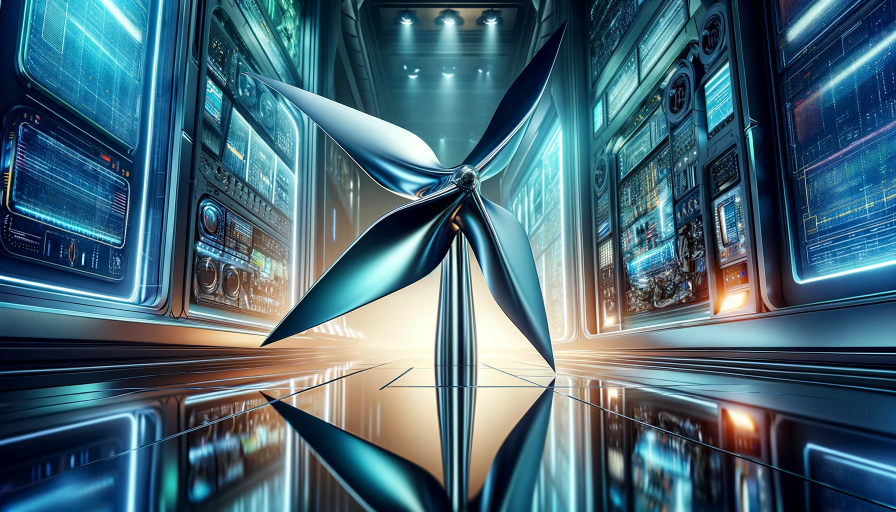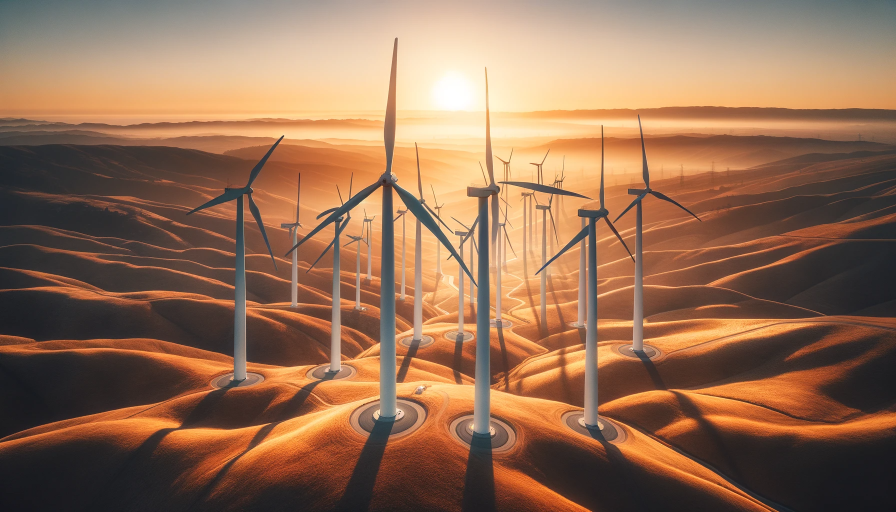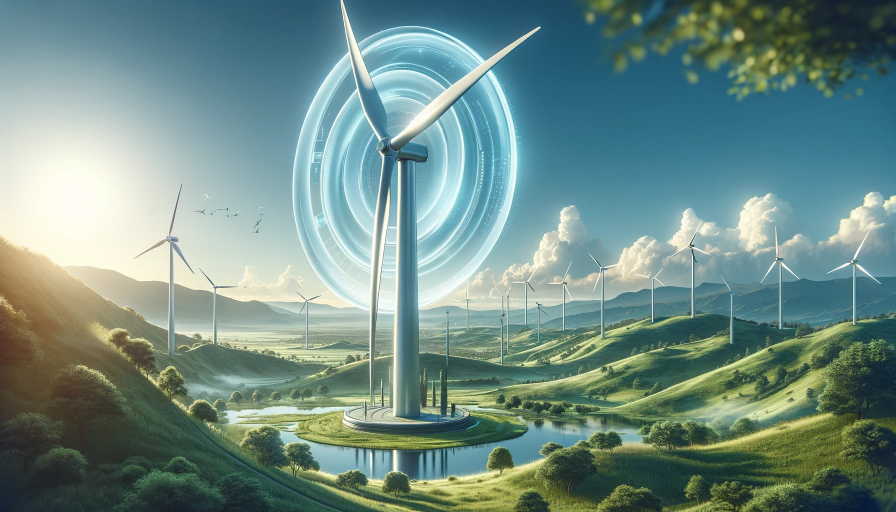Wind energy has become an increasingly important source of renewable energy in the global push to combat climate change and reduce our reliance on fossil fuels. Wind turbines are at the forefront of this clean energy revolution, and the efficiency of these turbines plays a critical role in maximizing their energy output. One of the key components that significantly impact a wind turbine’s efficiency is its blade design. In this article, we will delve into the world of wind turbine blade technology, exploring how design choices can enhance efficiency.
Table Of Content
We invite you to read: “Wind Turbine Safety: Protecting People and Birds”

Understanding the Basics
Wind turbine blades are the primary components responsible for capturing wind energy and converting it into mechanical power, which is then transformed into electrical energy through a generator. The fundamental goal of blade design is to extract as much kinetic energy from the wind as possible while minimizing losses due to friction and turbulence. To achieve this, engineers focus on various aspects of blade design.
Blade Length and Surface Area
One of the most obvious factors affecting a wind turbine’s efficiency is the length of its blades. Longer blades have a larger surface area and can capture more wind energy. However, longer blades also come with challenges, such as increased weight and higher manufacturing costs. Engineers carefully balance these factors to optimize blade length for a given wind turbine model.
Aerodynamic Shape
The aerodynamic shape of wind turbine blades is critical to their performance. Blades are typically designed with an airfoil shape, similar to that of an aircraft wing. This shape is optimized to generate lift and minimize drag as the wind flows over the surface. Advanced computational simulations and wind tunnel testing are used to fine-tune these shapes for maximum efficiency.
Materials and Construction
Selecting the right materials for blade construction is another crucial consideration. Modern blades are often made from composite materials such as fiberglass and carbon fiber, which offer a high strength-to-weight ratio. These materials are durable and lightweight, allowing for longer blades without a significant increase in weight.
We invite you to read: “Wind Turbines and Wildlife: Balancing Energy and Ecology”

Blade Twist and Flexibility
Blade twist and flexibility are design parameters that impact how a blade responds to varying wind conditions. Blades are often designed to twist along their length, allowing them to automatically adjust their angle of attack as wind speeds change. This self-regulating feature helps optimize energy capture across a range of wind speeds.
Noise Reduction
In addition to efficiency, noise reduction is a critical consideration in wind turbine blade design. Aerodynamic noise generated by the blades can be disruptive to nearby communities. Engineers work to develop quieter blade profiles and design features, such as serrated trailing edges, to mitigate noise while maintaining efficiency.
Challenges and Future Developments
As the wind energy industry continues to grow, there are ongoing challenges in wind turbine blade technology. One major challenge is the transportation of longer blades, which may require specialized equipment and infrastructure. Additionally, the development of innovative materials and manufacturing techniques holds the potential to further improve blade efficiency and reduce costs.
We invite you to read: “The Art and Science of Wind Turbine Design: A Closer Look at Aesthetics and Efficiency”

Conclusion
Wind turbine blade technology is at the heart of the quest for efficient and sustainable wind energy. By carefully considering factors such as blade length, aerodynamic shape, materials, and noise reduction, engineers continue to push the boundaries of what is possible in terms of energy capture and environmental impact. As technology advances and new innovations emerge, wind turbine blades will play a pivotal role in harnessing the power of the wind for a cleaner and more sustainable future.
FAQs
What is the primary function of wind turbine blades?
Wind turbine blades are designed to capture wind energy and convert it into mechanical power, which is then transformed into electrical energy through a generator.
How does blade length impact wind turbine efficiency?
Blade length affects the surface area for wind capture. Longer blades can capture more wind energy but come with weight and cost considerations that engineers must balance.
What is an airfoil shape in blade design?
An airfoil shape mimics that of an aircraft wing and is optimized for generating lift and minimizing drag as wind flows over the blade’s surface.
What materials are commonly used in wind turbine blade construction?
Modern wind turbine blades are often constructed using composite materials such as fiberglass and carbon fiber, chosen for their strength and lightweight properties.
You May Also Like
- Small-Scale Wind Turbines: Bringing Clean Energy to Communities
- Wind Turbines vs. Climate Change: A Powerful Ally in the Fight for Our Planet
- Vertical Axis Wind Turbines: An Alternative to Traditional Wind Turbines?
- The Evolution of Wind Turbine Technology: Past, Present, and Future
- The Advantages and Disadvantages of Large-Scale Wind Energy Projects

